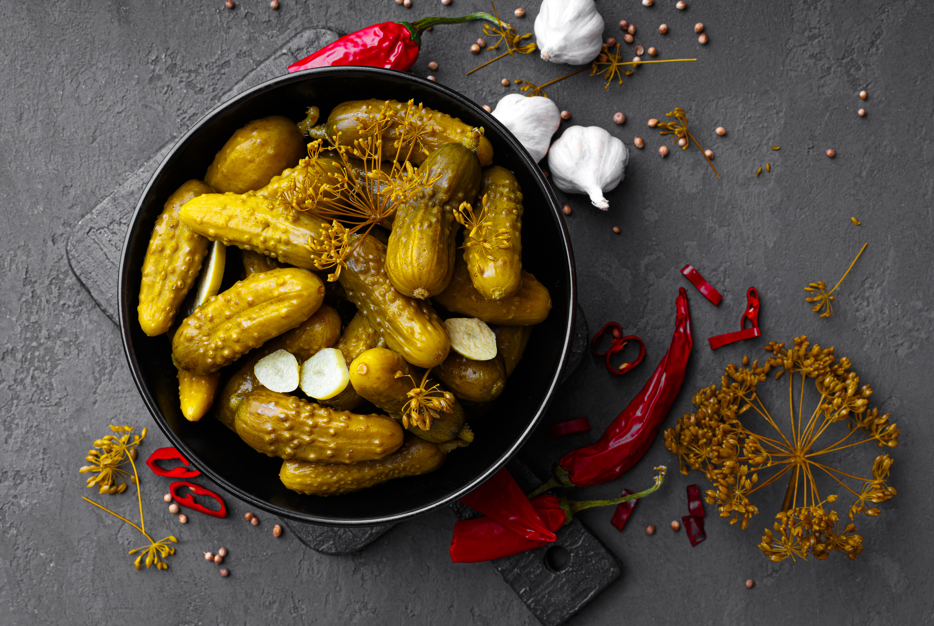Read More: Nutritional Information on Pickling Salt
The Fundamental Composition: Sodium Chloride and Nothing Else
Pickling salt, at its core, is pure sodium chloride (NaCl). This is its defining characteristic, and it’s what distinguishes it from other types of salt, such as table salt, which often contains additives like iodine and anti-caking agents. The purity of pickling salt is crucial for its function in preserving food, as these additives can cause cloudiness in the brine, discolor the pickled vegetables, and sometimes impart unwanted flavors.
Because pickling salt is essentially pure NaCl, its nutritional label is incredibly straightforward:
- Calories: 0
- Fat: 0g
- Carbohydrates: 0g
- Protein: 0g
- Vitamins & Minerals (other than Sodium): Typically 0 (or trace amounts insignificant for nutritional labeling)
- Sodium: A significant amount, usually around 590mg per 1/4 teaspoon (this can vary slightly depending on the brand and granule size).
This stark simplicity is not a negative; it’s precisely what makes pickling salt ideal for its purpose. It provides the necessary salinity for preservation without introducing other compounds that could interfere with the pickling process or alter the flavor of the final product.
Sodium: The Star (and Only) Player
The only nutritionally relevant component of pickling salt is sodium. Sodium is an essential electrolyte that plays a crucial role in various bodily functions, including:
- Fluid Balance: Sodium helps regulate the balance of fluids inside and outside of cells, which is essential for maintaining blood pressure and proper cell function.
- Nerve Function: Sodium ions are involved in transmitting nerve impulses throughout the body.
- Muscle Function: Sodium is necessary for muscle contraction and relaxation.
However, while sodium is essential, most people in modern societies consume far more sodium than they need. The recommended daily intake of sodium is generally less than 2,300 mg (about one teaspoon of salt), and many health organizations recommend even lower intakes, especially for individuals with high blood pressure or other health conditions.
Because pickling salt is used in the preservation process, pickled foods are typically high in sodium. This is unavoidable, as the high salt concentration is what inhibits the growth of spoilage-causing microorganisms. Therefore, individuals on sodium-restricted diets need to consume pickled foods in moderation.
The Nutritional Profile of Pickled Foods (Where the Real Nutrients Are)
While pickling salt itself provides virtually no nutrients other than sodium, the foods that are pickled often retain a significant portion of their original nutritional value. The nutritional profile of pickled foods will vary greatly depending on:
- The Vegetable/Fruit Being Pickled: Cucumbers, for example, are low in calories and provide some vitamin K and potassium. Beets are a good source of folate and manganese. Pickled peppers can be high in vitamin C.
- The Pickling Brine Ingredients: Besides salt, pickling brines often contain vinegar (which contributes negligible nutrients) and sometimes sugar. Sugar will add calories and carbohydrates to the final product. Spices used in pickling, while flavorful, typically don’t contribute significant amounts of nutrients in the quantities used.
- Fermentation vs. Vinegar Pickling: Fermented pickles, like some types of sauerkraut and kimchi, offer an additional nutritional benefit: probiotics. These beneficial bacteria are produced during the fermentation process and can contribute to gut health. Vinegar-pickled vegetables do not contain probiotics.
It’s crucial to remember that the pickling process itself can affect the nutrient content of the food. Some water-soluble vitamins, like vitamin C, may leach out into the brine. However, many nutrients, including fiber, minerals, and fat-soluble vitamins, are relatively well-preserved.
Addressing Common Misconceptions
- “Pickling salt is healthier than table salt.” This is not entirely accurate. Pickling salt is purer than table salt, but it’s not inherently healthier. Both are primarily sodium chloride. The main advantage of pickling salt is its lack of additives, which makes it better for pickling.
- “Pickled foods are ’empty calories’.” This is a generalization that doesn’t hold true. While the pickling salt itself provides only sodium, the vegetables being pickled retain many of their original nutrients. The overall nutritional value depends on the specific food being pickled.
- “All pickled foods are extremely high in sodium.” While pickled foods are generally high in sodium, the exact amount can vary. Reading the nutrition label on commercially produced pickled foods is important for monitoring sodium intake.
Conclusion: Understanding the Role of Simplicity
The nutritional information on pickling salt is remarkably simple: it’s almost entirely sodium chloride. While sodium is an essential nutrient, it’s also one that many people overconsume. Pickling salt’s role is not to provide a wide range of nutrients, but to act as a pure and effective preservative. The nutritional value of pickled foods comes primarily from the vegetables or fruits being preserved, along with any added ingredients in the brine. By understanding the distinct roles of the salt and the food it preserves, we can make informed choices about incorporating pickled foods into a balanced and healthy diet.


Share
Click on the icons below to share "Title of the item to share"